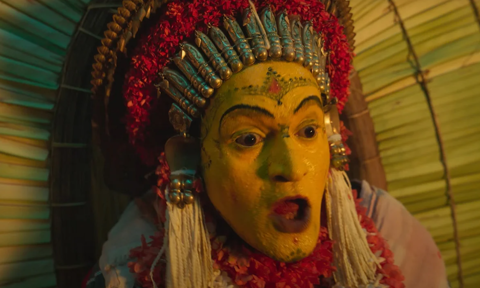
The Kannada movie Kantara has been making waves ever since it was released in September. The movie came at an opportune time when audiences across the country started discovering the universalness of the movies coming from regional cinema.
The success of Telugu and Kannada movies like Pushpa: The Rise, RRR, and the KGF series is a testament to this. Rishab Shetty’s Kantara, however, knocks it out of the park when it comes to combining all the factors of a commercial hit (whistle-worthy dialogues, superb action sequences, and stunning costumes) with a story that is powerful and thought-provoking with its symbolism.
The movie follows the clash between the beliefs of a forest-dwelling tribe and the government that seeks to declare the forest a reserved area where the villagers won’t be allowed to hunt or claim ownership as per an ancient barter between their lord Panjurli and the land’s king in the late 19th century. Shetty stars as the lead character Shiva, who is the champion of the villager’s rights and goes up against the forest officer Murlidhar (Kishore) and is backed by the village’s landlord.
Rishab Shetty not only starred as the lead (and the lead’s father) in the movie, but he has also written, directed, and co-produced the film. Kantara also stars Sapthami Gowda, and Achyuth Kumar.
WATCH: Rana Daggubati Movies
Kantara was recently made available to be streamed on multiple OTT platforms in different languages, including the original Kannada, Hindi, and English, and it deserves a place in your watchlists, in case you’re one of the few who haven’t watched it already.
Rishab Shetty Movie Kantara Facts
Here are a few facts about Kantara and how it was made that you should know…
1) The movie was shot in 96 days, on a budget of INR 16 crores. When compared to the mega-blockbuster hits from Telugu, Tamil, and Kannada cinema of recent times, Kantara had a shoestring budget. Despite this, the movie managed to make INR 188 crores in the first month. So far, it has been estimated to cross INTR 420 crores worldwide in box office numbers.
2) Shetty revealed that he recorded the haunting shriek of the Daiva at the end of the movie’s shooting. In an interview, he elaborated that each shriek meant something different as the story progressed. It also varied between performers and had to be done right. So if you’re watching it for the first time (or the third or fourth, no judgements!), make sure to keep an ear out for the differences.
3) The scene where Shiva’s gun backfires, and injures the Deputy Range Forest Officer, was based on a true story that happened to a friend of Shetty’s. It was one of the incidents that led him to write the whole story.
4) Shetty didn’t use a stunt double for the Kambala scene. The entry scene of the character Shiva took place in the middle of Kambala, an annual buffalo race that is traditionally sponsored by local landlords. Shiva enters the screen atop running buffaloes and makes for a magnificent picture. Shetty revealed that he trained for four months to get it right and even failed a lot in the beginning.
5) The iconic ‘Varaha Roopam’ song was removed from the OTT version of the movie, following a copyright claim and an injunction by the district court. Malayalam band Thaikkudam Bridge alleged that the song was plagiarised from their 2015 track ‘Navarasam’ and should be removed from the movie. The song was modified to include a different melody in the online version of the movie. The High Court, however, dismissed the claim and injunction and the original version of the song was restored in the movie.
6) You can actually stay at the landlord’s stunning house for a vacation. The gorgeous property where many pivotal scenes of the movie take place is actually a heritage resort in the Udupi district of Karnataka.
7) The title of the movie translates to ‘mystical forest’. Shetty elaborated on its significance in an interview, saying, “‘Kantara’ is a mysterious forest and this is a story that happens around the area... The film title has a tagline calling it a ‘dhanta kathe’ or a legend. I did not want to give the film a straight or direct title. The word is not used often. While it has Sanskrit origins, it is used in Kannada too. It is used in Yakshagana too, where we call a very mysterious forest ‘Kantara’.”
Kantara is streaming on Amazon Prime Video and Netflix in multiple languages now.






